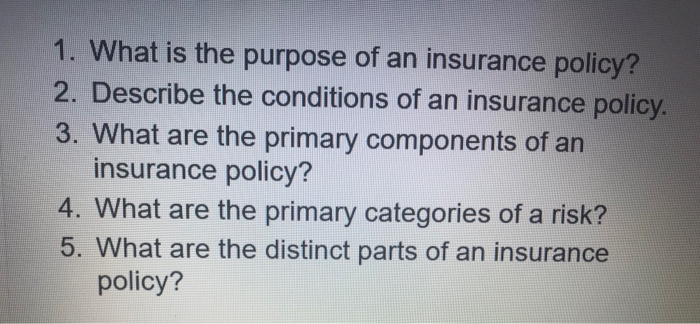Our Pacific Prime Statements
Our Pacific Prime Statements
Blog Article
Getting The Pacific Prime To Work
Table of ContentsThe 9-Minute Rule for Pacific PrimeEverything about Pacific Prime10 Easy Facts About Pacific Prime Described7 Easy Facts About Pacific Prime Explained
In the majority of states, the insurance firm is required to send you a copy of the modifications to your plan. It is necessary that you read Recommendations or Motorcyclists so you comprehend just how your policy has changed and if the plan is still ample to fulfill your demands. To get a duplicate of your insurance coverage plan, please contact your insurance coverage agent or company.
The Institute of Medicine (IOM) Board on the Effects of Uninsurance launches a prolonged assessment of evidence that addresses the significance of health insurance coverage with the publication of this record. Insurance coverage Issues is the very first in a series of six records that will certainly be released over the next two years recording the reality and effects of having actually an estimated 40 million people in the USA without health and wellness insurance protection.

The Pacific Prime PDFs
The objective of this series of studies is to refocus plan attention on a historical problem. Complying with the lengthiest economic growth in American background, in 1999, an estimated one out of every six Americans32 million adults under the age of 65 and even more than 10 million childrenremains without insurance (Mills, 2000).

10 percent of the population represent 70 percent of healthcare expenditures, a relationship that has stayed continuous over the previous three decades (Berk and Monheit, 2001) - international travel insurance. Hence medical insurance proceeds to offer the function of spreading risk even as it significantly funds regular care. From the viewpoint of health care suppliers, insurance lugged by their individuals aids safeguard a revenue stream, and communities benefit from financially practical and steady health and wellness treatment experts and establishments
Federal government gives medical insurance to populaces whom the exclusive market might not offer properly, such as impaired and seniors, and populaces whose accessibility to healthcare is socially valued, such as children and pregnant females. The best ends of medical insurance coverage for the individual and areas, consisting of work environment communities of employees and companies, are boosted health outcomes and lifestyle.
Getting The Pacific Prime To Work
Employees place medical insurance first by much in significance amongst all the benefits supplied in the work environment (Salisbury, 2001). There have actually been large investments of individual why not check here and public funds to supply health insurance coverage, numerous individuals still have no insurance coverage. Despite considerable reporting of survey searchings for and healthcare research results, the public remains baffled and mistaken concerning Americans without health insurance coverage and the effects of lacking protection.

Without question, the intricacy of American healthcare financing mechanisms and the riches of resources of details add to the public's confusion and suspicion regarding medical insurance statistics and their interpretation. This record and those that will adhere to goal to distill and present in conveniently easy to understand terms the extensive study that bears on concerns of medical insurance coverage and its significance.
Fifty-seven percent of Americans questioned in 1999 thought that those without wellness insurance are "able to get the care they require from doctors and healthcare facilities" (Blendon et al., 1999, p. 207). In 1993, when national interest was concentrated on the issues of the without insurance and on pending wellness treatment regulations, simply 43 percent of those surveyed held this belief (Blendon et al., 1999).

They additionally obtain less preventative solutions and are much less likely to have normal treatment for chronic problems such as high blood pressure and diabetes. Persistent conditions can bring about pricey and disabling issues if they are not well handled (Lurie et al., 1984; Lurie et al., 1986; Ayanian et al., 2000). One national study asked greater than 3,400 adults concerning 15 very severe or dark problems.
The smart Trick of Pacific Prime That Nobody is Talking About
Extra proof exists later on in this phase in the discussion of insurance and accessibility to healthcare. https://www.openstreetmap.org/user/pacificpr1me. People without medical insurance are young and healthy and balanced and select to go without insurance coverage. Practically fifty percent (43 percent) of those checked in 2000 thought that people without wellness insurance coverage are more most likely to have health issue than people with insurance policy
Voters and plan makers in emphasis group discussions identify those without insurance coverage as youths that have the opportunity to be covered and feel they do not need it (Concierge Novelli, 2001). Compared to those with at the very least some private protection, the uninsured are less most likely to report being in exceptional or great wellness (Agency for Health Care Study and High Quality, 2001).
SOURCE: Facility for Price and Funding Studies, Agency for Health Care Study and Quality, based on MEPS information. Young person between 19 and 34 are far a lot more most likely to do not have health insurance coverage than any kind of other age group. This is mainly due to the fact that they are less commonly qualified for employment-based insurance policy due to the nature of their task or their brief period in it.
The assumption that individuals without insurance policy have better-than-average health follows from confusing the relatively young age profile of the uninsured with the much better health and wellness, typically, of more youthful individuals. This obscures the link between health and wellness condition and wellness insurance policy. For those without accessibility to office health insurance policy, inadequate health and wellness is a possible barrier to buying nongroup insurance coverage due to the fact that such insurance coverage might be highly priced, exclude preexisting problems, or be simply inaccessible.
Report this page